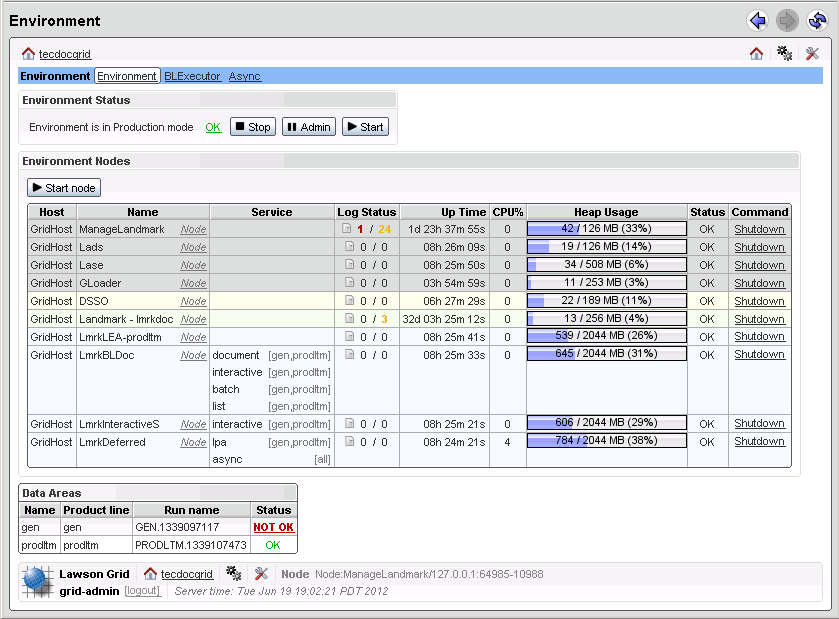Landmark Management Pages
Landmark includes a set of application management pages tailored to the administration and configuration needs of Landmark. Some of the tasks that you can accomplish through the Landmark application management pages can also be performed through the grid management pages. However, the Landmark management pages provide a central location for working with Landmark.
There are four Landmark management pages:
-
Environment
-
Async
-
BLExecutor
-
Common Services
Environment Management Page
The Environment page is the main management page for Landmark. On this page, you can:
-
Stop and start the environment, or set it in admin mode (these are essentially equivalent to the
startlaw,stoplaw, andadminlawcommands). -
Stop and start the grid nodes for Landmark components.
-
Monitor the status of the Landmark environment, the data areas within the environment, and the grid nodes for Landmark.
Note:When the system checks the status of the product lines or data areas, it is checking for all the bindings that have been defined. In some cases, the status for the gen product line or data area may be listed as "NOT OK." However, this should be of no concern if the message you see when you click on "NOT OK" indicates a binding not needed for gen, such as Embedded Analytics.
-
Access the log files for each grid node.

Async Management Page
The Async management page allows you to manage the Async Framework queues, including suspending and resuming processing, and disabling types of processing.
BLExecutor Management Page
The BLExecutor management page provides a detailed view of the nodes that perform business logic processing such as the LmrkBLDoc and LmrkInteractive nodes. Three different views are provided, sorted by node, execution type, or data area. From any of these views, you can manage the processing pools.
Common Services Management Page
The Common Services management page allows you to review the status of connection pools and repository caches for the nodes.